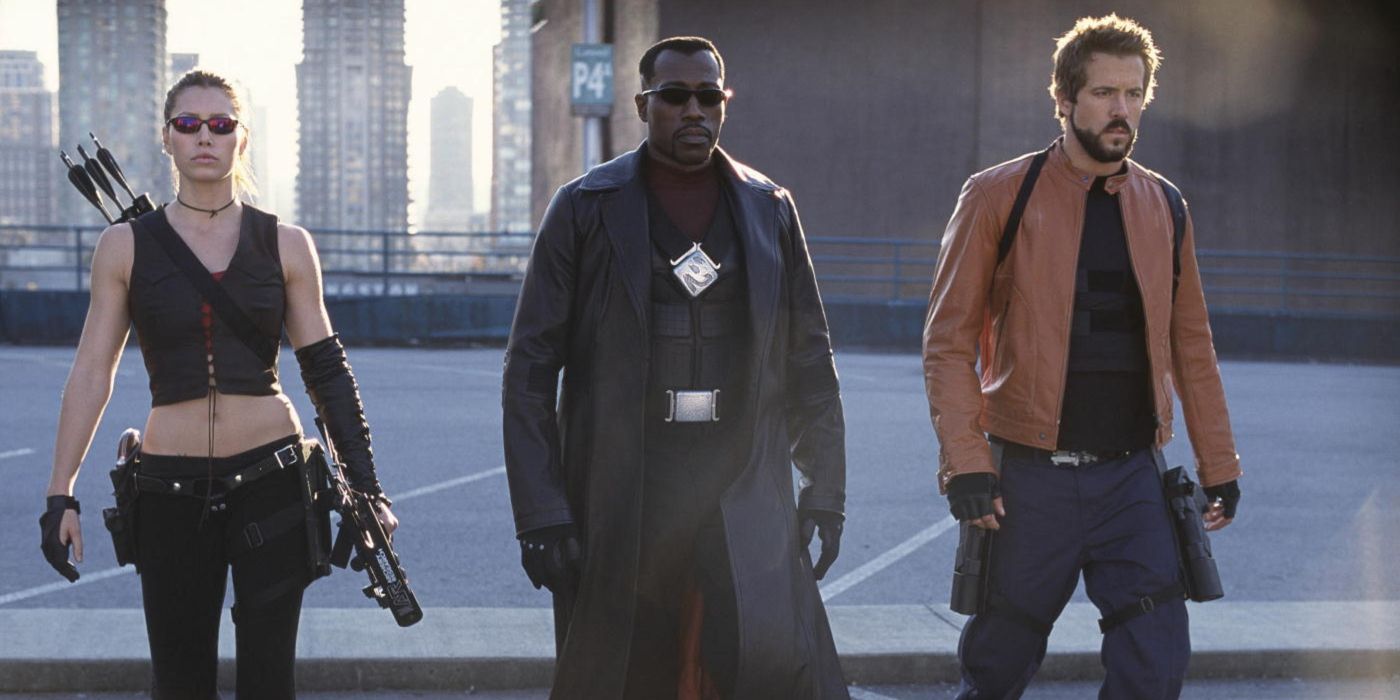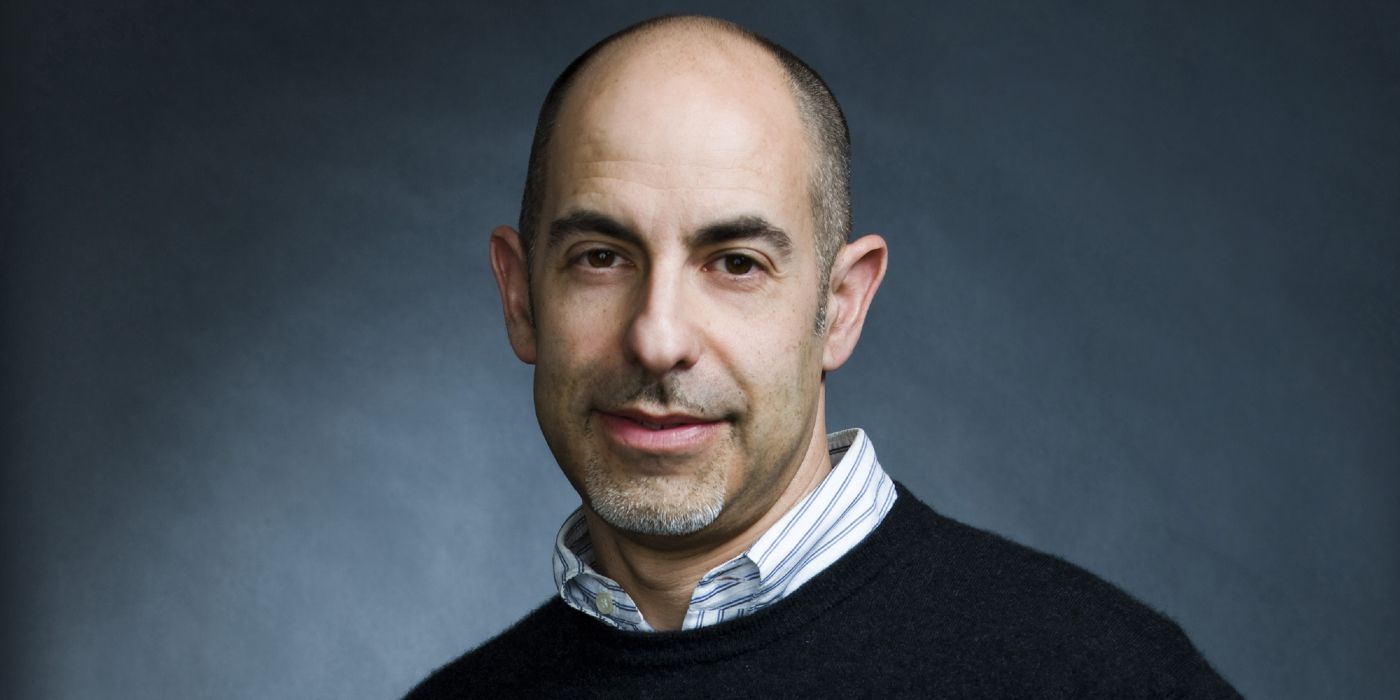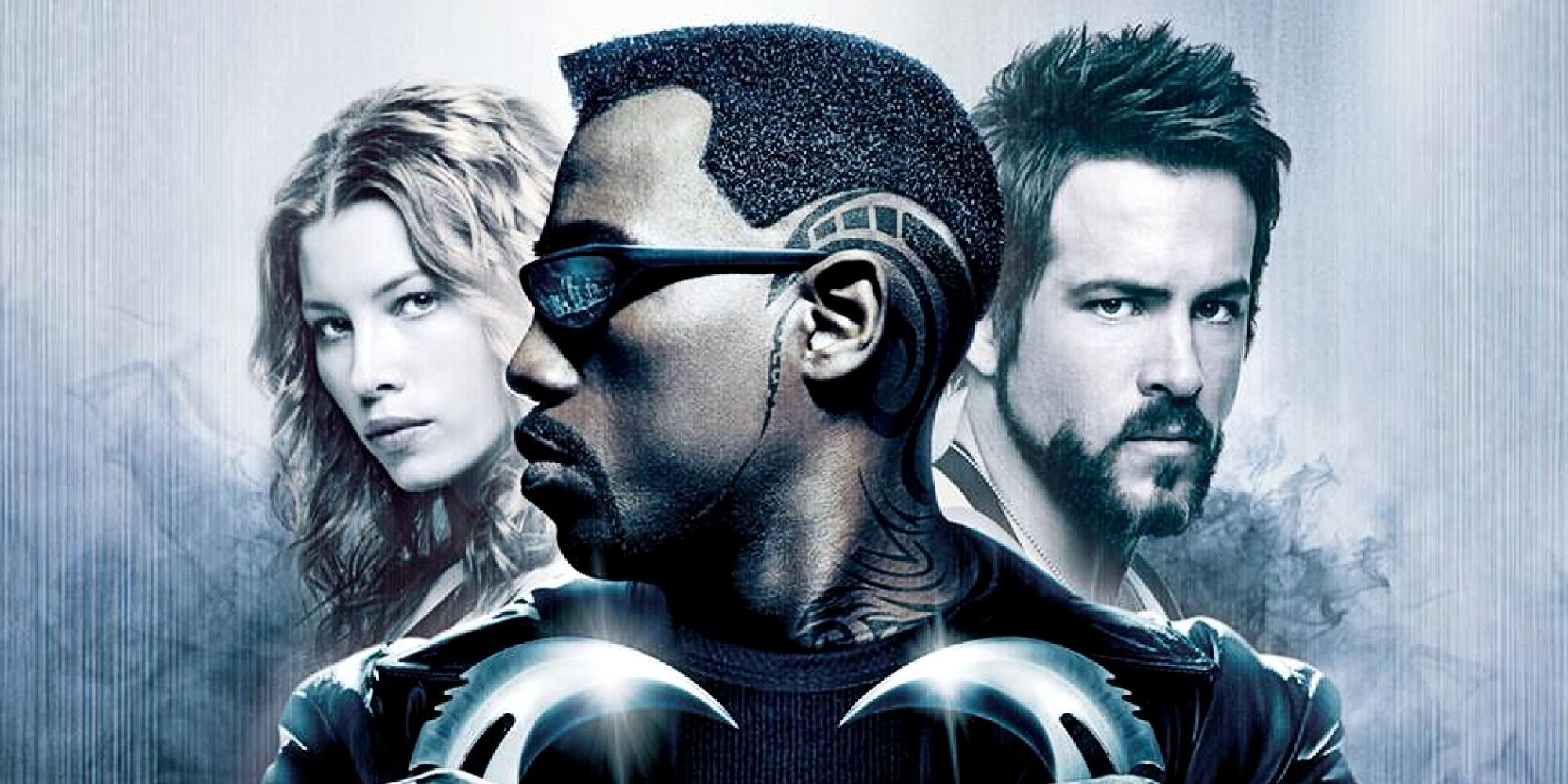David S. Goyer’s Blade: Trinity is condemned as the worst entry in the Blade trilogy, but its outrageous behind-the-scenes stories may explain its failure. First released on December 8th, 2004, Blade: Trinity was lambasted by critics for its formulaic storyline, one-dimensional characters, and poor acting performances almost across the board. Yet, if the rumors and tales emanating from the Blade: Trinity camp in the years following its release are to be believed, then Blade: Trinity stands as a testament to making the best of a bad situation in Hollywood’s pressure-cooker environment.
Following the darker viscera of both Blade 1998 and Blade II, Blade: Trinity moves the Blade trilogy into far campier territory. The third Blade installment sees Wesley Snipes’ titular protagonist team up with Abigail Whistler (Jessica Biel) and Hannibal King (Ryan Reynolds) to combat a revived Dracula (Blood Red Sky‘s Dominic Purcell) as Danica’s (Parker Posey) vampire hordes begin to enact a fresh plan to subjugate the human race. Blade: Trinity is packed with cheesy one-liners and miscast roles that conspire to make Goyer’s production feel more akin to a supernatural romp than the razor-sharp Marvel comic adaptation that won his original Blade script such acclaim in 1998.
However, Blade: Trinty‘s outrageous behind-the-scenes stories go a long way toward explaining the movie’s failure. From leading man Wesley Snipes allegedly choosing to only communicate through Post-it notes to wholesale, last-minute script changes, it is more than fair to say Blade: Trinity‘s production was not a seamless affair. Here are the most outrageous behind-the-scenes stories from Blade: Trinity, as well as why they explain the movie’s well-documented failure upon release in 2004.
Blade: Trinity’s Abrupt Script Change

After penning two massively successful scripts via Blade and Blade II, David S. Goyer more than deserved the chance to helm the beloved cinematic franchise he helped create. While following in Stephen Norrington and Guillermo Del Toro’s shoes as director is certainly no easy task, Goyer felt he had the perfect opportunity to cap the planned Blade trilogy in style – backed up by a dark and dystopian script. Per a 2012 AV Club interview, Patton Oswalt (who plays Hedges in Blade: Trinity) recounts how Goyer’s first Blade: Trinity script was set to have Blade questioning his humanity as Earth becomes overrun with vampires. Oswalt goes on to recount: “there’s a scene where Blade goes in and confronts this guy for harvesting humans. That scene was supposed to be the whole basis of the film. Blade is fighting for the last shred of humanity. But they thought that it was just so f***ing grim, so they decided to just have Blade fighting Dracula. It was just one of those; it was a very troubled production.“
This highlights the wholesale changes Goyer’s script was forced to endure after New Line Cinema executives decided Blade: Trinity needed to be a lighter movie, with the subsequent Blade product translating as a very diluted paint-by-numbers affair. Goyer’s dystopian vision was essentially replaced by Hannibal King’s one-liners and a weak Dracula plot that served to make Blade: Trinity feel more like fan fiction than the third installment of the award-winning Blade trilogy. While a writer of Goyer’s talents, who has also written Christopher Nolan’s blockbuster Dark Knight trilogy, may well have been able to save Blade: Trinity‘s script early on, chopping and changing the movie’s story mid-production was only going to end one way for the 2004 film.
Blade: Trinity’s Director Hired Biker Bodyguards

Unfortunately for Goyer, New Line’s aggressive script meddling was far from the only issue he had to endure on the Blade: Trinity set. In the same AV Club interview, Oswalt recounts how, following an on-set disagreement, Wesley Snipes allegedly “tried to strangle the director, David Goyer.” Oswalt goes on to recount the subsequent evening, stating: “So we went out that night to some strip club, and we were all drinking. And there were a bunch of bikers there, so David says to them, “I’ll pay for all your drinks if you show up to set tomorrow and pretend to be my security.” Sure enough, the next morning, these bikers allegedly appeared on set to “guard” Goyer, with Oswalt concluding that “Wesley freaked out and went back to his trailer,” capping a wild 24 hours on the Blade: Trinity set.
Blade: Trinity‘s leading man has strongly refuted this account in the following years, however, with Wesley Snipes telling The Guardian in 2020: “Let me tell you one thing. If I had tried to strangle David Goyer, you probably wouldn’t be talking to me now. A black guy with muscles strangling the director of a movie is going to jail, I guarantee you… Never happened.” Whichever version of events is correct here; it is clear the disharmony in the Blade: Trinity camp seeped into the production’s final product as the relationship between Goyer and Snipes broke down.
Wesley Snipes Only Communicated Through Post-It Notes

The final outrageous tidbit spilled by Oswalt in his infamous 2012 AV Club interview is that, allegedly, an increasingly isolated Snipes chose to only communicate through Post-it notes on the Blade: Trinity set. Oswalt recalls that “Wesley [Snipes] was just f***ing crazy in a hilarious way. He wouldn’t come out of his trailer, and he would smoke weed all day” before going on to say that “he [Snipes] would only communicate with the director through Post-it notes. And he would sign each Post-it note “From Blade.”
Again, it must be said that Oswalt’s account has been strongly refuted by Wesley Snipes. In the same 2020 The Guardian interview, Snipes, when pressed on the subject, said: “This is part of the challenges that we as African Americans face here in America – these microaggressions. The presumption that one white guy can make a statement and that statement stands as true! Why would people believe his version is true? Because they are predisposed to believing the black guy is always the problem. And all it takes is one person, Mr. Oswalt, who I really don’t know. I can barely remember him on the set, but it’s fascinating that his statement alone was enough to make people go: ‘Yeah, you know Snipes has got a problem.'”
Wesley Snipes Sued The Production For $5 Million

While many of Blade: Trinity‘s outrageous behind-the-scenes stories have multiple sides to them, one iron-clad tale arrives in the form of Wesley Snipes’ lawsuit against the production. In 2005, Snipes sued New Line Cinema and Goyer, claiming that the studio did not pay his full salary. Snipes also alleged that he was intentionally cut out of casting decisions and the filmmaking process, despite being one of the producers, and that his character’s screen time was reduced in favor of co-stars Ryan Reynolds and Jessica Biel – whose roles increased exponentially following the movie’s wholesale script changes. While the result of Snipes’ 2005 lawsuit has been kept tightly under wraps, this is just the latest in a catalog of outrageous behind-the-scenes stories that show why Blade: Trinity failed as both a spectacle and production in 2004.




